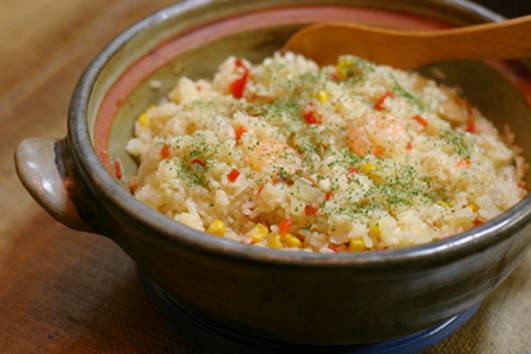Japanese Potteries(Explanations to the technical terms of ceramics No.15)
There are various technical words on potteries. Here are some of those, for which I'd like to give you some remarks.
Donabe (Earthenware Pot)
A season comes that piercing cold wind blows, and we yearn to have a simmering pot dish. At any rate, Japanese love a hot pot. Many people may say that they’re willing to enjoy a hot pot twice a week or more. Usually a pot dish is seasoned in a way they like, filling a donabe with winter vegetables like Chinese cabbage, white radish and mizuna greens together with fish or meat. One of the typical styles may be mizutaki; vegetables and favorite meat boiled with plain soup, served with ponzu sauce, as well as other plenty styles of pot dishes such as yosenabe, motsunabe, chanko nabe, anko nabe, dotenabe, oden, sukiyaki and many more.The donabe is used not only for cooking such pot dishes but also for steaming rice. There is even a type of donabe that is specially designed for rice dishes. By using such a heat-conductive earthenware, rice is said to be cooked quicker and better. You steam it for 10 minutes and just wait for another 15 minutes, and perfect shining steamed rice is there. By the way, you should choose a donabe which shape is round having smaller bottom area as heat and water go around well inside. When the pot is excessively boiled, the broth will be boiling over from the gap of the pot and the lid. In fact, however, the good flavor of rice is condensed in such broth as boils over. Therefore, to try to prevent it boiling over, you should use a pot which part of receiving the lid is more or less 3 cm in the width, or just watch the heating temperature and lower it at the time of boiling.
"Donabe (Earthenware Pot)"

(Photo) Pilaf cooked with
donabe
Donabe means a pot that is made of exclusive fireproof clay. It characteristically retains heat much better than a metal pot and keeps foods warm for a long time after heat is turned off. There are many traditional donabe makers in the Iga region. This is because of the characteristic of Iga clay which is easily warmed up but hardly cooled down as it becomes porous after fired. A pot will be cracked when firing if it’s made of other types of clay but not if Iga clay. There is also another type of clay to be used, which contains petalite. The material is not expanded nor shrunk with heat, and by kneading it, clay becomes heat-resistant just like Iga clay. However, you should be careful to wipe water out of the bottom of the pot before firing as it causes cracks.
